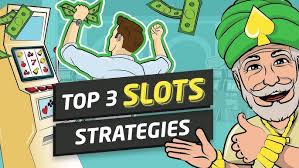The Rise of Play-to-Earn Gaming
Play-to-earn (P2E) gaming has emerged as one of the most transformative trends in the gaming industry, shifting the way players view their time and efforts spent in virtual worlds. Unlike traditional games where the focus is purely on entertainment, P2E games allow players to earn real-world value through in-game activities. This model is driven by blockchain technology, which enables players to earn cryptocurrency, NFTs (non-fungible tokens), and other digital assets by participating in gameplay. As a result, players are increasingly viewing gaming not just as a leisure activity but as an opportunity to generate real income. Games like Axie Infinity, Decentraland, and The Sandbox are at the forefront of this shift, offering players a chance to monetize their gaming experiences in new and innovative ways.
From Leisure to Livelihood: Earning through Gameplay
The fundamental shift brought on by P2E games is that players can now turn their gaming time into a legitimate income stream. This is particularly appealing in countries with limited economic opportunities or in regions where the cost of living is low, allowing players to earn a substantial income that might exceed local wages. For instance, in Axie Infinity, players earn the game’s native cryptocurrency, Smooth Love Potion (SLP), through battles, breeding, and other in-game activities. These tokens can be traded for real-world currency on various cryptocurrency exchanges. Some dedicated players have even turned gaming into a full-time career, with earnings that rival or surpass traditional jobs. The opportunity to earn through gaming has democratized income generation, offering a new form of livelihood for people who may have been excluded from traditional employment sectors.
The Role of Blockchain and NFTs in Digital Earnings
At the core of the P2E model is blockchain technology, which allows for the creation and management of in-game assets as NFTs. These NFTs are unique digital items that are stored on the blockchain, ensuring that players have true ownership over their virtual possessions. This is a significant departure from traditional games where in-game items, skins, or currencies are controlled by the game developer. With NFTs, players can buy, sell, and trade assets freely, creating a virtual economy that mirrors the real world. For example, in The Sandbox, players can buy virtual land, build on it, and sell or lease it to other users. These transactions are secured by blockchain, allowing for transparent, verifiable exchanges. By integrating NFTs, P2E games have transformed virtual assets into real-world commodities, offering players the potential for digital earnings through creative and strategic gameplay.
New Business Models in the Digital Economy
As P2E gaming continues to evolve, new business models are emerging that allow players to generate income beyond simply playing the game. Many gamers are creating virtual businesses, selling digital goods, or offering services within the game’s ecosystem. In Axie Infinity, for instance, some players run “scholarship” programs, where they lend their Axies to less experienced players and take a percentage of the earnings from the gameplay. Similarly, in games like Decentraland and The Sandbox, players can build virtual shops, host events, or sell virtual items to other players. These activities mimic real-world entrepreneurship, where digital assets and in-game creations serve as the foundation for profit generation. The growing demand for virtual goods and services has turned gaming into an industry where creativity, strategy, and entrepreneurship are key to financial success.
Challenges and Sustainability of Digital Earnings
While the potential for digital earnings through P2E gaming is immense, there are several challenges and risks that players and developers must navigate. The most significant of these is the volatility of cryptocurrency markets. The value of in-game tokens can fluctuate drastically, which can make earnings unpredictable. Additionally, as the popularity of P2E games increases, so does the competition, which can drive down earnings for less skilled players. Environmental concerns around the energy consumption of blockchain technology, particularly in games that use proof-of-work systems, also pose challenges to the long-term sustainability of the P2E model. However, many developers are working to address these issues, with some transitioning to more eco-friendly blockchain solutions, such as proof-of-stake, and integrating mechanisms to stabilize token value.
In conclusion, the shift toward digital earnings through play-to-earn gaming represents a fundamental change in the gaming industry, as players now have the opportunity to generate real-world income through virtual activities. Blockchain and NFTs have enabled this transformation, turning in-game assets into valuable commodities that players can buy, sell, and trade. As the industry continues to grow, P2E gaming is not only offering new income streams but also giving rise to new business models and entrepreneurial opportunities. While challenges remain, such as market volatility and environmental concerns, the future of P2E gaming looks promising, with many players finding financial success in the digital economy. This shift is not just changing the way we game—it’s changing the way we think about work, entrepreneurship, and income in the digital age.
Play and win real money at the best online casino – Join now!



